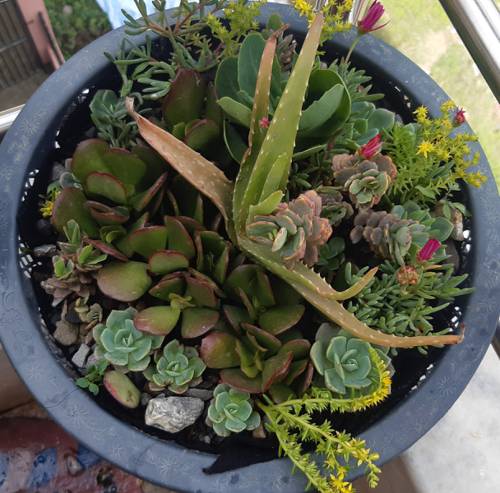
FAQ About Indoor Plant Time Management for Busy Lifestyles

How much time should I allocate for indoor plant care each week?
The time you need to dedicate to indoor plant care varies based on the number and type of plants you have. Generally, setting aside about 15 to 30 minutes a week can be sufficient for basic tasks such as watering, checking for pests, and rotating the plants for even light exposure. For more extensive collections or plants with specific needs, you might require additional time.

What are some quick tips for watering indoor plants efficiently?
To water indoor plants efficiently: 1) Group plants with similar watering needs together. 2) Use a self-watering pot or a water globe to reduce frequent watering. 3) Choose a specific day of the week for watering to make it a habit. 4) Use a watering can with a long spout to reach all plants easily without moving them.

How can I monitor my indoor plants' health with limited time?
For quick health checks, learn to recognize signs of common issues like wilting, yellowing leaves, or pests. Set up a schedule to briefly inspect each plant once a week. Use smartphone apps that can diagnose plant problems quickly by analyzing photos of your plants.

What are the best types of indoor plants for a busy lifestyle?
Opt for low-maintenance plants such as succulents, snake plants, pothos, and ZZ plants. These plants typically require less frequent watering and are more forgiving in lower light conditions, making them suitable for busy individuals.

Can technology help in managing indoor plant care?
Yes, technology can significantly aid in plant care. Use smart plant sensors that monitor soil moisture and light conditions. Schedule reminders or use apps that track watering, feeding, and pruning routines to stay organized and informed.

Is it advisable to have indoor plants while having a busy lifestyle?
Yes, having indoor plants is advisable. They can improve air quality, reduce stress, and create a more appealing home environment. Choosing low-maintenance varieties and employing efficient care strategies can make plant ownership manageable even with a busy schedule.

How can I make pruning quick and efficient?
Schedule pruning sessions monthly or seasonally based on plant growth patterns. Use sharp pruning shears to make clean cuts, and focus on removing dead or damaged leaves and stems. Knowing the specific pruning needs of each plant can make the process quicker.

How can I integrate indoor plant care into my routine?
Integrate plant care into existing routines by pairing it with another regular activity, like your morning coffee or evening wind-down. Allocate specific times for various tasks across the week and use reminders to stay consistent.

What are common mistakes busy people make with indoor plant care?
Common mistakes include overwatering due to irregular schedules, neglecting pest and disease inspections, and placing plants in unsuitable light conditions. Setting a care schedule and using automatic reminders can help avoid these issues.

How often should indoor plants be fertilized if I'm short on time?
Fertilization frequency depends on the plant type, but generally, every 4-6 weeks during the growing season is sufficient. For busy individuals, using slow-release fertilizer can minimize the frequency needed for fertilization.

Can I automate my indoor plant care routine?
Yes, automation can significantly ease the burden of plant care. Invest in automated watering systems or smart planters that can adjust watering schedules based on soil moisture levels, using timers and sensors.

What is the most time-consuming part of indoor plant care, and how can it be minimized?
The most time-consuming aspect is usually watering and pest management. Use self-watering pots and establish a quick weekly routine for checking pests. Regularly clean plant leaves to prevent dust accumulation, which can hinder photosynthesis.

How can I ensure my plants get enough light with minimal effort?
Place plants in optimal locations where they can receive adequate natural light based on their needs. For areas with insufficient light, consider using LED grow lights. These can be programmed to operate specific hours, ensuring plants receive consistent lighting.

What are low-maintenance indoor plants that can thrive despite infrequent care?
Low-maintenance plants like spider plants, peace lilies, and rubber plants are resilient to infrequent care. They can withstand occasional neglect and still thrive with minimal attention.

How can I prevent pests and diseases with limited time for care?
Prevent pests by regularly wiping down leaves and maintaining proper humidity levels. Use natural pest deterrents like neem oil sprays. Preventative care, like ensuring good air circulation and avoiding overwatering, reduces the likelihood of disease.

Can I hire someone to help with indoor plant care if I am extremely busy?
Yes, many services offer plant care assistance, including watering, pruning, and checking for pest issues. Hiring professional plant care can be a worthwhile investment for those unable to maintain plants regularly themselves.

How do I know if I'm overwatering my indoor plants?
Indicators of overwatering include yellowing leaves, wilting despite wet soil, and moldy soil surface. Ensure pots have proper drainage and allow soil to dry out between waterings to prevent overwatering. If in doubt, check the soil moisture level with your finger or a moisture meter.

What are the signs that indoor plants need repotting, and how can I fit it into a busy schedule?
Signs include roots growing out of the pot's drainage holes, stunted growth, and frequent wilting. Plan repotting during weekends or days off to ensure you have enough time. Use fast-draining soil and pots with appropriate sizes to ease the process.

Should I consider indoor plants in every room for a better lifestyle balance?
Placing indoor plants in different rooms can enhance air quality and ambience throughout your home. However, consider the lighting conditions and temperature of each room when choosing plant locations. Start with easy spots like the living room or kitchen to see the benefits before expanding.

How can I stay motivated to care for indoor plants with a hectic schedule?
Stay motivated by choosing plants that are visually appealing and suit your home decor. Celebrate small successes, like new growth, to boost enthusiasm. Joining online plant communities can also offer encouragement and tips from fellow plant enthusiasts.
